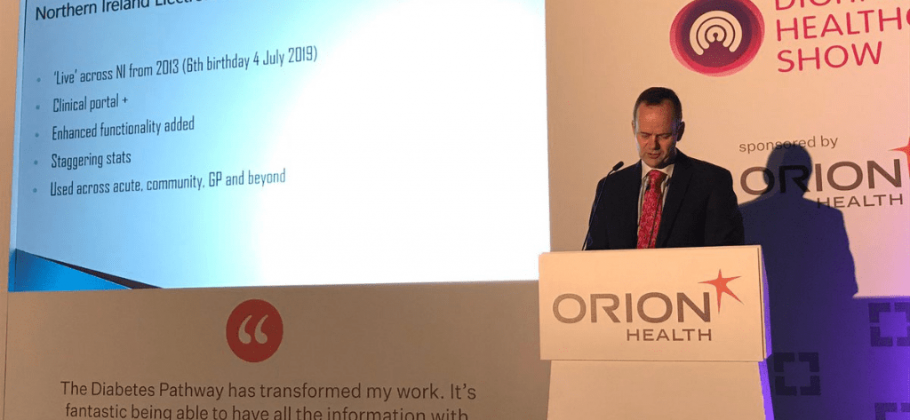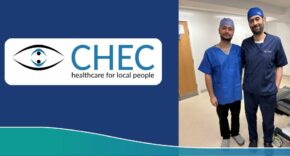“An aspiration achieved”
A step by step guide to building the Northern Ireland Electronic Care Record; and learning from its success.
Many areas of the UK are only just starting to explore the large-scale digital care record projects that will be critical to delivering the integrated care and population health management agendas. Yet there are records up and running that are not only delivering benefits, now, but demonstrating how those benefits escalate as projects expand and mature.
The Northern Ireland Electronic Care Record, or NIECR, is a good example. Stephen Beattie, eHealth programme manager at the Business Services Organisation, told the annual Health Plus Care conference how it had started as a simple portal, but has since grown into a “base record” and “business critical system” through a series of steps.
1. It started with a portal
Beattie told his audience at London’s ExCel conference centre that the NIECR celebrated its sixth anniversary on 4 July. The system started as a clinical portal, pulling information from the systems in use at Northern Ireland’s five health and social care trusts and its ambulance service, to create a single patient record.
Since then, additional features have been layered in on top of the basic functionality that was created using the clinical portal that is now part of the Orion Health Amadeus Open Platform. And engagement has grown to the point where the NIECR has 25,000 active users.
“Before the NIECR, there were many systems and many logins, but the NIECR has pulled everything together and put the patient at the centre of the system,” Beattie explained. “It means people are connected to their care and the people who care for them are connected to each other.”
2. Sealed with a KIS
Two of the key components of the NIECR are access to the Emergency Care Summary Record, which records a patient’s name, date of birth, gender, address, phone number, medication and known allergies, and access to the Key Information Summary Record, or KIS.
This supports people with chronic conditions or who need end of life care, and so includes additional details, such as a patient’s wishes. Health Plus Care is a social care show as much as it is a health show, so Beattie’s audience could readily see the “incredible value” of making this information available to the many professionals caring for a patient with complex needs.
“One story that demonstrates this is that our ambulance service went to see an elderly person who was incredibly confused, and they were able to look at the KIS and see that she did not need to be taken into hospital, but could be cared for at home,” he said. “That saved a lot of resource and, of course, stress for the patient.”
3. On the right path(way)
One of the additional pieces of functionality layered into the NIECR is Orion Health Coordinate, which has been used to build a diabetes pathway that can be used in various settings, including the patient’s home.
The pathway is split into two main sections: a patient summary that can, in fact, be used as the foundation for any care pathway for any patient group, and a diabetes specific section that can be used to capture medications, assessments, and even pregnancy-specific data for women with gestational diabetes.
Information can be pulled from the pathway into what Beattie described as “traditional formats”, such as letters, and then sent directly into GP systems. “Before we had the pathway, each trust had its own diabetes system, so a consolidated view of a patient’s data was not possible,” he explained.
“Now, pretty much our entire diabetes population is enrolled on the pathway, and it is very, very useful for patient care.” (At the show, the value of the diabetes pathway was demonstrated by video endorsements from Dr Roy Harper, senior endocrinologist, Gail Thompson, podiatry lead and William Munday, diabetes specialist nurse.
4. Turning the screen around
Another piece of functionality layered into the NIECR is Orion Health Engage; a patient or citizen portal that Northern Ireland has been trialling for the past year with dementia patients. Currently the patient portal – My Care Record – provides the citizen / patient with their recent and upcoming appointments, a searchable, validated and curated library of health related information provided by healthcare professionals, a bi-directional file sharing facility for direct exchange of information between a patient and a healthcare professional and a circle of care facility the shows everyone involved in the care of the patient be that healthcare professionals, other agencies or friends and family. The patient can also choose to nominate members of their circle of care as ‘representatives’ and give them access to the portal on their behalf.
A second phase, which will add in clinical documents, is due to go-live this summer. This will display clinical documents from the NIECR to the patient. Also in phase 2 is a goals module, this allows the patient to set various goals and update progress towards those goals. Beattie explained that dementia patients were chosen for the pilot because they were a “tough cohort”; one likely to expose all of the information governance and consent challenges that a patient portal project might face. However, he told his audience: “Because we are building the [patient] portal on an electronic care record, it is condition agnostic. It can support any condition that a patient might have.”
Once phase two is in place, access may be extended to diabetes patients, because of the rich clinical data built up in the diabetes pathway. “Some doctors already say that they turn the screen around to show their patients what they can see, so we are really taking that on board,” he said.
5. Standing on firm foundations
This record of success has not always been easy to achieve. At ExCel, Beattie’s audience, who might well have been planning or delivering similar projects, were keen to know what challenges it had faced, and how it had overcome them.
He stressed it was important to get the basics right. For example, the NIECR has worked hard to maintain the confidence of the organisations whose systems supply its information. There is a clinical content group, with a member from each of the trusts plus a GP, that debates and prioritises ideas, and decides when new content is ready for launch.
There is also an information governance team, with the same kind of membership, that decides on information governance issues (patient consent was initially based on an opt-out following an information campaign; but is now based on the public task provisions of the GDPR).
To drive adoption, champions have been funded at each trust to support deployment and “evangelise” for the system. But, at the end of the day, Beattie said a key factor is that the NIECR has always been “a system designed for clinicians, by clinicians” or, increasingly, “a system designed for health professionals, by health professionals.”
“There has been a lot of close working with health and care organisations, with health professionals, and with patients,” he concluded. “It has been a hard journey, but totally worth it. That is what has kept us going and will keep us going through the next phases as well.”













